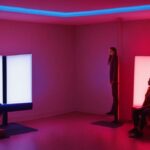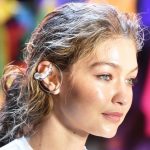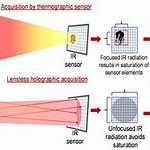Light therapy is a form of treatment that uses specific wavelengths of light to improve mood, regulate sleep patterns and alleviate symptoms of various conditions such as seasonal affective disorder (SAD), depression, and skin disorders. While this therapy is known for its benefits, there is a concern that it can also cause anxiety in some individuals. In this discussion, we will explore whether light therapy can indeed cause anxiety and examine the factors that can contribute to this potential side effect.
Contents
The Science Behind Light Therapy
Light therapy, also known as phototherapy, is a non-invasive treatment that uses specific wavelengths of light to improve mood, sleep, and skin health. It is commonly used to treat seasonal affective disorder (SAD), a type of depression that occurs during the winter months due to a lack of sunlight exposure. Light therapy is also used to treat other types of depression, sleep disorders, and skin conditions such as psoriasis and eczema.
How Does Light Therapy Work?
Light therapy works by stimulating the brain’s production of serotonin, a neurotransmitter that regulates mood, appetite, and sleep. Exposure to bright light also suppresses the production of melatonin, a hormone that regulates sleep-wake cycles. This is why light therapy is often used to treat circadian rhythm disorders such as jet lag and shift work disorder.
While light therapy is generally considered safe, some people may experience side effects such as headaches, nausea, and eyestrain. In rare cases, light therapy can cause anxiety or manic episodes in people with bipolar disorder. This is because bright light can trigger the release of dopamine, a neurotransmitter that regulates reward and pleasure. Too much dopamine can cause feelings of euphoria and excitement, which can lead to manic behavior in people with bipolar disorder.
Who Should Avoid Light Therapy?
People with a history of bipolar disorder or other mood disorders should consult their doctor before using light therapy. They may need to adjust their medication or use a lower intensity light to prevent manic episodes. People with skin conditions such as eczema or lupus should also avoid light therapy, as it can worsen their symptoms.
How to Use Light Therapy Safely
To avoid side effects, it is important to use light therapy correctly. Here are some tips for using light therapy safely:
- Use a light box that emits at least 10,000 lux of light.
- Use the light box for 30 minutes to 2 hours a day, depending on your doctor’s recommendations.
- Use the light box in the morning to avoid disrupting your sleep-wake cycle.
- Sit at least 16 to 24 inches away from the light box.
- Keep your eyes open but do not stare directly at the light.
- If you experience side effects, such as headaches or eyestrain, reduce the duration or intensity of the light therapy.
Are There Any Alternative Treatments?
If you are unable to use light therapy or prefer not to, there are alternative treatments available. Some people find that dawn simulation, which involves using a lamp that gradually increases in brightness, is just as effective as light therapy. Others may benefit from cognitive-behavioral therapy (CBT) or antidepressant medication. It is important to discuss your options with your doctor to determine the best treatment for you.
The Benefits of Light Therapy
Light therapy has many benefits, including improving mood, sleep, and skin health. One of the most common uses of light therapy is to treat seasonal affective disorder (SAD), a type of depression that occurs during the winter months due to a lack of sunlight exposure. Light therapy is also used to treat other types of depression, sleep disorders, and skin conditions such as psoriasis and eczema.
Key takeaway: Light therapy is a safe and effective treatment for mood disorders, sleep disorders, and skin conditions, but it can cause side effects such as headaches, nausea, and eyestrain. People with a history of bipolar disorder or other mood disorders should consult their doctor before using light therapy, and pregnant women should avoid it. Alternative treatments such as dawn simulation, cognitive-behavioral therapy, or antidepressant medication may be suitable for those who cannot or prefer not to use light therapy.


.jpg)




